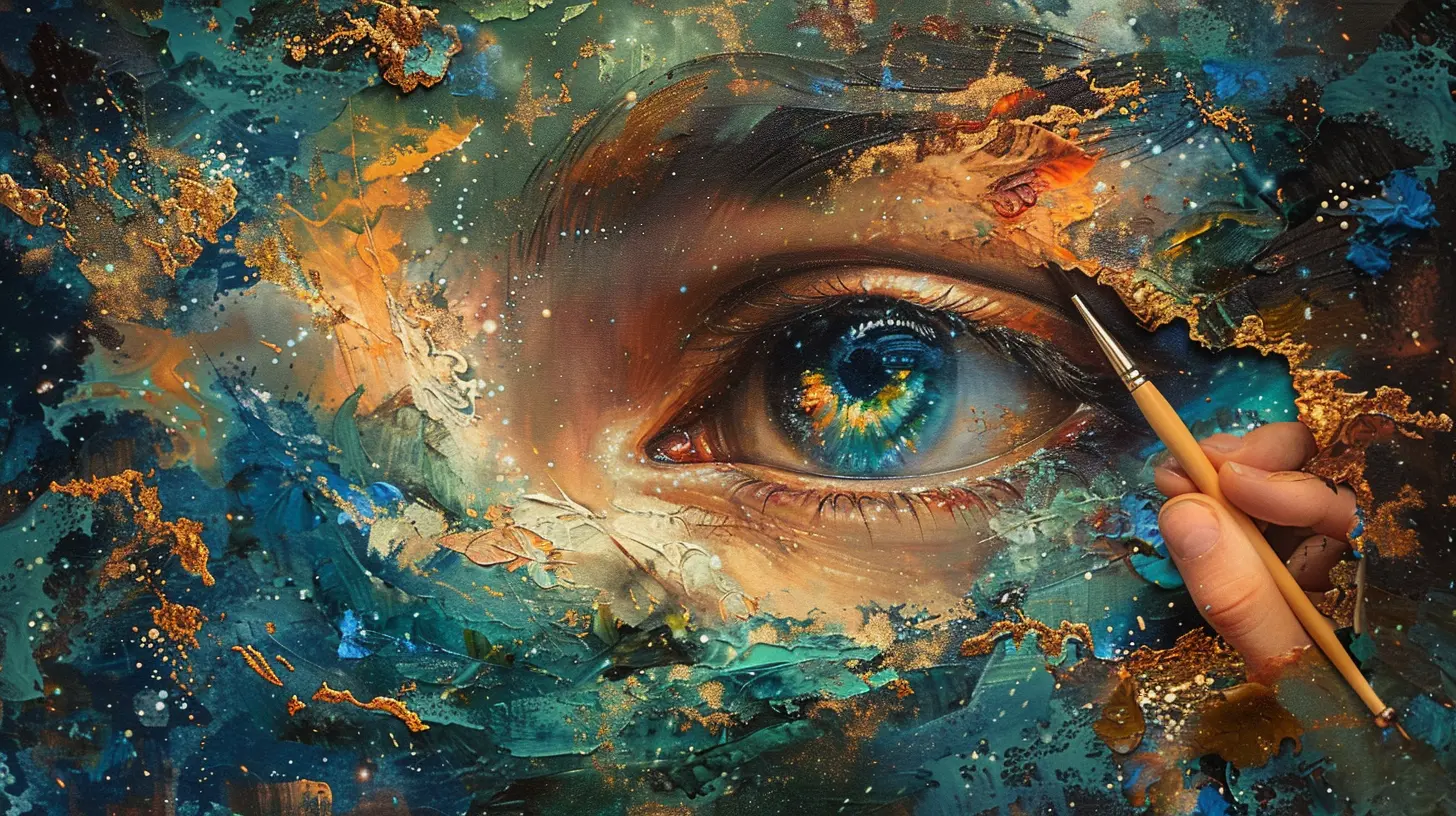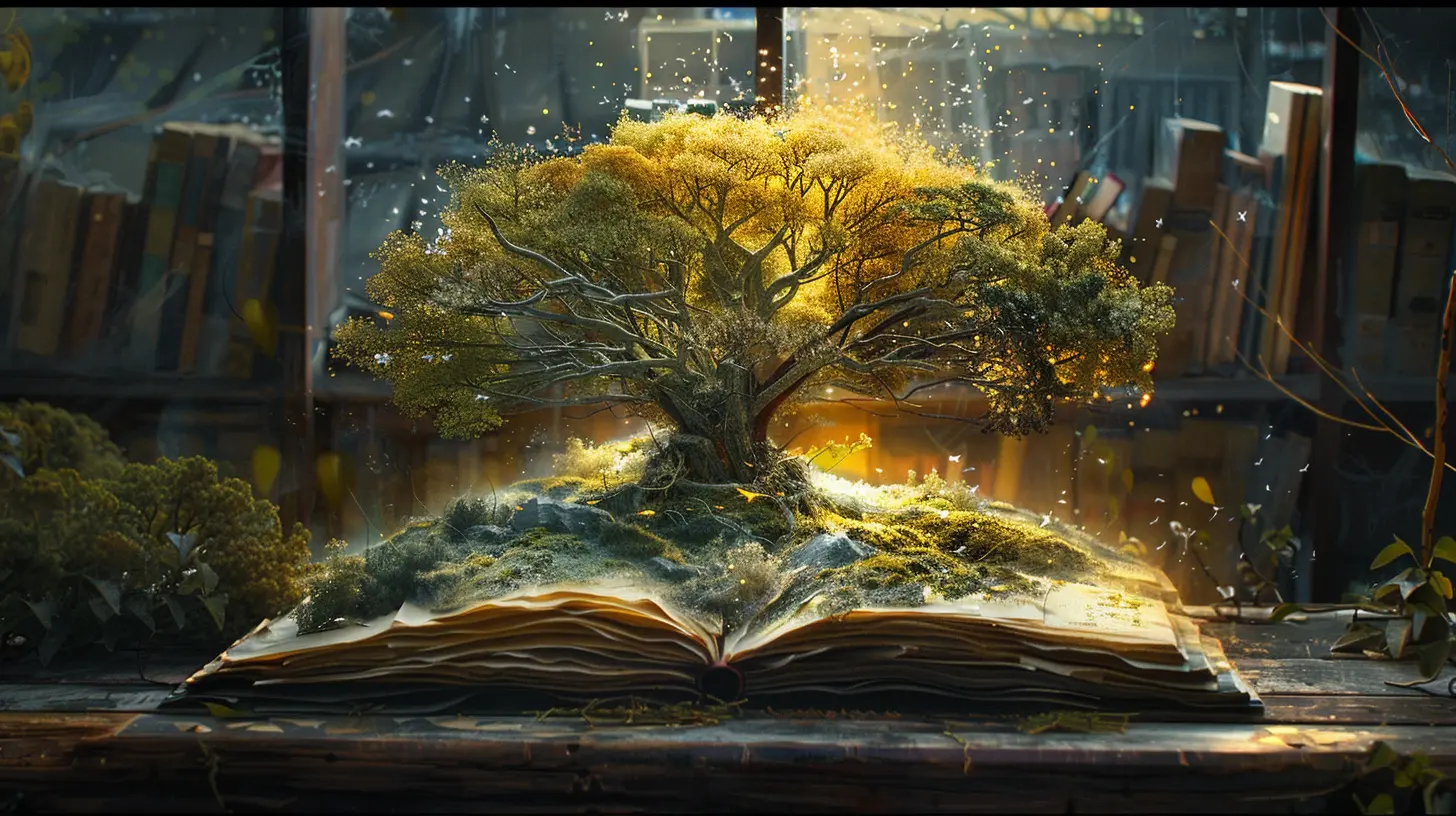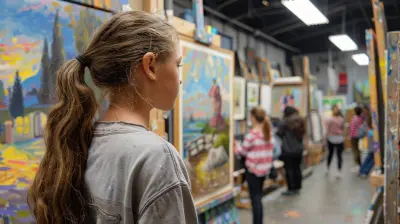Art and Storytelling: Teaching Narrative Through Visual Arts
17 June 2025
Storytelling is one of the most profound ways humans share knowledge, emotions, and experiences. But have you ever considered how art itself tells a story? From ancient cave paintings to modern graphic novels, visual arts have been a powerful medium for storytelling. Whether you're a teacher, student, or art enthusiast, understanding how to teach narrative through visual arts can open up a whole new world of creativity and expression.
Let’s dive into how art and storytelling are connected and why this combination is a fantastic tool for education!

Why Storytelling Matters in Art
Storytelling isn't just about words on a page. It’s about emotions, connections, and experiences. When we look at a painting or a sculpture, we don’t just see colors and shapes—we see a story.Think about Leonardo da Vinci’s The Last Supper. It captures a pivotal moment in history with incredible detail. The expressions, body language, and even the positioning of objects all contribute to the narrative. That’s the power of visual storytelling!
When students learn to tell stories through art, they develop critical thinking and communication skills. It encourages them to look beyond the surface and ask, What is happening here? What emotions does this evoke?

The Connection Between Visual Arts and Narrative
1. Art as a Universal Language
Not everyone finds it easy to express themselves through words, but art offers an alternative. A single image can communicate emotions, struggles, and dreams without a single word. This makes art a powerful storytelling tool for people of all ages and backgrounds.2. Engaging the Imagination
Art stimulates the mind in ways that words sometimes can’t. Have you ever seen an abstract painting and interpreted it differently from someone else? That’s because visual storytelling invites personal interpretation, engaging viewers in a way that feels interactive and immersive.3. Enhancing Emotional Connection
Stories told through pictures often evoke strong emotions. A child's drawing of their family may look simple but could carry deep emotions. A mural depicting historical events can make viewers feel the struggles and triumphs of the past. When students create art with a story in mind, they tap into their emotions, making their learning experience much more meaningful.
Teaching Narrative Through Visual Arts
Now, the big question—how do we actually teach storytelling through art? Whether you're an educator or a parent looking to inspire creativity, here are some effective strategies.1. Start with Storytelling Basics
Before jumping into the art, make sure students understand the key elements of storytelling:- Characters – Who is in the story?
- Setting – Where does it take place?
- Conflict – What challenges are being faced?
- Resolution – How does the story conclude?
Once these elements are clear, students can translate them into their art.
2. Use Famous Artworks as Inspiration
Show students classic artworks and ask them to describe the story behind each piece. For example:- What do they think Starry Night by Van Gogh represents?
- What story is told in Picasso’s Guernica?
- How does Frida Kahlo’s self-portraits tell her personal journey?
Encouraging discussion helps students see how storytelling plays a role in art.
3. Encourage Sequential Art
Comics and graphic novels are fantastic tools for teaching narrative through visuals. Ask students to create a short comic strip where they illustrate a small event from their lives. This helps them think about sequencing and how to convey ideas without relying too much on words.4. Let Students Create Their Own Story Paintings
A great exercise is to give students a blank canvas and ask them to visually represent a story—whether it’s a fairy tale, a personal memory, or an imaginary adventure. Encourage them to use symbols, colors, and composition to communicate their message.5. Use Mixed Media for Deeper Expression
Storytelling doesn’t have to be limited to pencil and paper. Encourage students to experiment with different materials like collage, clay, digital media, or even photography to tell their stories in unique ways.6. Incorporate Personal Narratives
One of the most effective storytelling techniques is allowing students to tell their own stories. Ask them to create "story portraits" that depict an important moment in their lives. This can help build confidence and make them feel heard through their artwork.7. Introduce Symbolism and Metaphors
Many artists use symbols to add depth to their work. Teach students how certain colors, objects, and gestures can represent bigger ideas—for example, a clock can symbolize the passage of time, a tree can represent growth, and a dark sky might indicate sadness.
The Benefits of Teaching Stories Through Art
1. Boosts Creativity
Teaching narrative through art encourages students to think outside the box. Instead of just memorizing facts, they actively create and innovate.2. Develops Communication Skills
Art helps students express themselves in ways they might not be able to with words. This can be especially beneficial for those who struggle with verbal or written communication.3. Builds Critical Thinking
When students analyze paintings or create their own visual stories, they develop observational and analytical skills. They learn to question, interpret, and evaluate what they see.4. Encourages Empathy and Emotional Intelligence
Art allows students to step into different perspectives. When they tell stories through visuals, they explore emotions, relationships, and human experiences. This builds empathy and a deeper understanding of the world.5. Makes Learning More Engaging
Let’s face it—traditional learning can sometimes feel dull. Incorporating art into storytelling makes lessons more interactive, hands-on, and enjoyable.Final Thoughts
Art and storytelling are a magical combination. Together, they allow students to express their thoughts, emotions, and ideas in ways that words alone sometimes can't. By integrating visual arts into storytelling, we not only enhance creativity but also foster critical thinking, communication, and emotional intelligence.So, whether you're sketching, painting, or creating digital art—remember, every piece has a story to tell. How will you tell yours?
all images in this post were generated using AI tools
Category:
Art EducationAuthor:

Olivia Chapman
Discussion
rate this article
3 comments
Fenris Middleton
This article beautifully highlights the intersection of art and narrative, emphasizing how visual storytelling can enhance comprehension and engagement. It prompts reflection on our own storytelling practices and the profound impact of integrating visual arts in education. A powerful reminder of creativity's role in learning!
June 23, 2025 at 3:21 AM

Olivia Chapman
Thank you for your thoughtful reflection! I’m glad you found the article resonant and appreciate the importance of integrating visual arts in storytelling and education.
Bryce McCabe
Love the vibrant blend of art and storytelling! Such a fantastic way to inspire creativity!
June 19, 2025 at 2:42 AM

Olivia Chapman
Thank you! I'm glad you enjoyed the blend of art and storytelling—it's a powerful way to ignite creativity!
Wesley Benson
Who knew crayons could tell stories? Time to unleash those inner Picassos—art isn't just pretty; it's pure narrative gold!
June 18, 2025 at 10:29 AM

Olivia Chapman
Absolutely! Crayons transform simple expressions into powerful narratives, showcasing how art can convey deep stories and emotions. Unleash your creativity!



